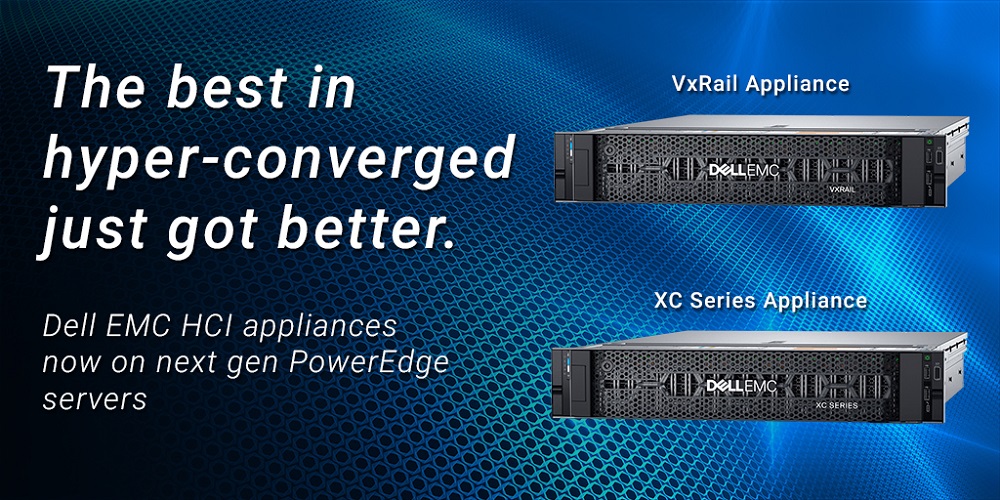
One of the more popular misconceptions often mistaken for gospel truth these days is that hyper-converged infrastructure (HCI) platforms don’t scale – and can only be used for remote office or smaller customers. HCI platforms, in fact, can already efficiently scale out to cost-effectively handle well north of 80 percent of most application workload requirements. We have customers with north of a thousand HCI nodes – in a single datacenter, so BIG. We have customers with hundreds of sites with a single HCI appliance, so SMALL. Size doesn’t matter.
Another misconception is that they are not ready for critical applications. That’s simply not right. North of 65% of our HCI customers are supporting applications they deem mission critical.
Yet another misconception is that HCI is really only suited for VDI, or workloads where CPU/storage scale together. Yet again – not right. Yes, they are great for VDI, but they are also great for all sorts of workloads, particularly when they can support all kinds of flexible configurations.
At Dell EMC we’re moving to dispel any and all myths surrounding HCI platforms – and continue to expand the market, supporting more customers in more use cases.
Today we’ve introducing VxRail on 14th Generation PowerEdge servers, which now incorporate for the first-time chips from the Intel® Xeon® Processor Scalable Family. In terms of performance, these platforms represent a phenomenal advance. They not only double the performance of existing workloads but VxRail on 14th Generation PowerEdge servers can now also run three times as many workloads.
We believe that the x86 server is becoming the base building block not just for compute – but through software defined stacks for storage, networking, and compute abstractions – the base building block for almost every workload. We approached the design of the 14th Generation PowerEdge servers to not only be an idealized compute and virtualization platform – but build in more than 150 improvements focused on making them to be the ideal platform for HCI (more on this later).
So – how did we achieve these massive performance, serviceability, and availability goals? We start by taking advantage of the Intel® Xeon® Processor Scalable Family to provide significantly faster access to applications and data using much higher core counts. Each of those cores has a faster clock frequency, more memory channels, and faster memory. Those advances combine to provide up to 1.7x more processing power and 62 percent higher internal bandwidth.
For customers who have standardized on VMware and are looking for the incredible unique capabilities of vSAN 6.6, there is nothing easier, nothing more turnkey, nothing more integrated (not only from an engineering standpoint, but also from a support standpoint) than VxRail. How does the new 14th Generation PowerEdge platform turbocharge VxRail?
Facemelting performance for the most demanding applications with up to 2X more IOPS (input/output operations per second), and more than 2x faster response times. There are also now 9x more predictable response times that can be sustained at sub-one millisecond – not only through the kernel-integrated capabilities of VMware vSAN, but also through he incredible IO subsystem of PowerEdge.
Other benefits include the ability to perfectly right-sized deployments with millions more configurations spanning more processor options, new SATA SSDs, additional network connectivity options, and a 50 percent expansion of the GPUs that can be added – useful not only for extremely awesome VDI use cases, but also for fascinating AI/machine learning use cases. Historically, customers needed to choose the simplicity of HCI by trading off relatively rigid configurations and linear scaling models – but, not anymore.
VxRail has always had leading embedded Dell EMC data protection capabilities including Recoverpoint for VMs. We’ve now made available software-defined NAS support with Dell EMC Isilon SD Edge for use in remote offices or edge-to-core file deployments.
For those customers that have chosen not to standardize on VMware we’re also making 14th Generation PowerEdge Servers available as part of the Dell EMC XC Series, which has material updates of its own beyond the new 14th generation PowerEdge platforms. This includes embedding Dell EMC Data Protection directly into the Prism management interface, new unique data protection for customers using Dell EMC XC and Microsoft Hyper-V together, and new Dell EMC Data Domain integration.
Let’s talk about some of those 150 built-in capabilities in the Dell EMC PowerEdge 14th generation servers that optimize for the software-defined storage (SDS) at the core of all HCI approaches. There is improved support for SSDs and NVMe devices in scale-out deployments. That’s important because increasingly HCI all-flash approaches are becoming universal, and consistent performance for cache and capacity tier and pools is critical. This is particularly true for HCI approaches where the cache tier plays a critical role and the slowest performing drive in a system can dictate the cluster-level performance in some cases. Even for approaches using SDS models like ScaleIO which are less dependent on a cache tier, there’s simply a massive scaling improvement for massive pools of extremely low-latency IOPS and petabytes of capacity. VxRack FLEX HCI customers can expect this 14G capability to come to them in the near future. Beyond the storage design, in the 14th generation PowerEdge platforms, there’s also faster initialization and streamlined data storage management; new system boot approaches; increased drive cooling for improved reliability; expanded GPU capabilities, and, if needed, a common user interface for managing both Dell EMC server and HCI platforms.